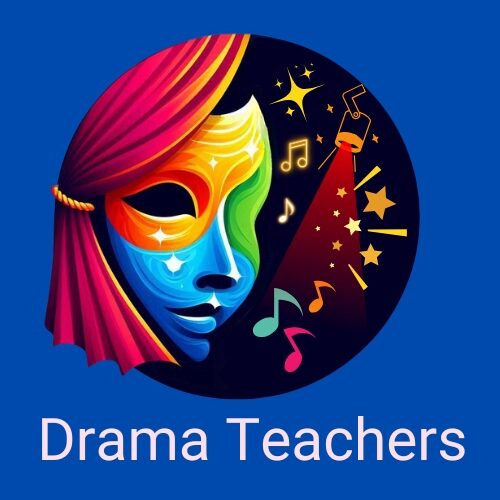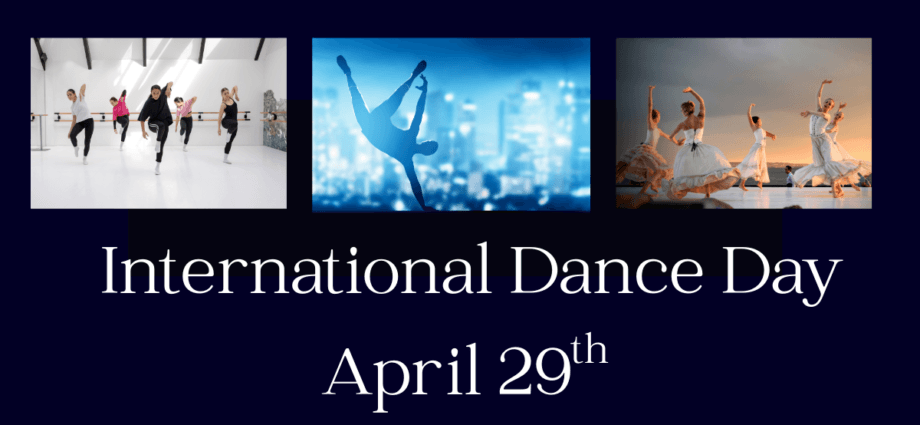On April 29, the world comes together to celebrate one of my favourite pastimes ever – dancing! International Dance Day is a global tribute to the art of dance and its profound impact on culture, education, and personal expression. Established in 1982 by the International Theatre Institute (ITI), this day commemorates the birth of Jean-Georges Noverre, famed as one of the creators of modern ballet.
A global celebration
International Dance Day transcends cultural and linguistic barriers, uniting people worldwide through the universal language of movement. Dance is said to be one of the oldest forms of communication and celebration in ancient cultures and know matter who we are, there are times when we just want to dance from sheer bliss. From ballet to hip-hop, traditional folk dances to contemporary styles, International Dance Day honours the rich diversity of dance forms and their ability to connect us all.
The success and enduring appeal of shows like “Strictly Come Dancing” are testament to the fact that dance can appeal to all ages, genders and ethnicities. And as that show proves, it can also be done by people of all abilities and disabilities.
Each year, the ITI selects a prominent dancer or choreographer to deliver the official International Dance Day message, inspiring individuals and communities to engage with dance and recognise its significance in society.
This year (2025), the honour falls on the renowned dancer and choreographer, Mikhail BARYSHNIKOV from Latvia and USA. He has written the following message for International Dance Day 2025:
It’s often said that dance can express the unspeakable. Joy, grief, and despair become visible; embodied expressions of our shared fragility. In this, dance can awaken empathy, inspire kindness, and spark a desire to heal rather than harm. Especially now—as hundreds of thousands endure war, navigate political upheaval, and rise in protest against injustice—honest reflection is vital. It’s a heavy burden to place on the body, on dance, on art. Yet art is still the best way to give form to the unspoken, and we can begin by asking ourselves: Where is my truth? How do I honor myself and my community? Whom do I answer to?
-Mikhail Baryshnikov

Photo by Knight Foundation – Flickr: YoungArts 2010, CC BY-SA 2.0, https://commons.wikimedia.org/w/index.php?curid=20397705
The power of dance in education
If you have lived your life through dance, drama and the performing arts, as I have, you will know that dance is more than just an art form; it is a powerful educational tool that fosters creativity, discipline, and emotional expression. As I write this, I’ve just come back from watching my daughter in her dance show. She was so beautifully expressive in every atom of her body. She has struggled with the traditional subjects such as maths and English, but when it comes to dance, she shines very brightly. Now that may be just a very proud parent talking, but I know that there a many students out there just like her, who may feel inadequate a times because their passion lies outside of the mainstream, traditional view of education. She has certainly had her own fair share of being bullied and feeling useless because she struggled with the ‘core’ subjects. But get her on a dance floor and she does what no one else does – and she does it with style and passion – and there’s not a dry eye in the house!
As teachers, I believe it is our duty to foster these creative talents and to stand tall against the onslaught of the ‘education machine’ that would have us all turning out factory-made, identical workers ready to feed the corporate machine.
I believe that it is our duty and privilege to be able to occasionally put a spanner in the works of the ‘machine’, and to craft individuals who are not only creative, forward-thinking and talented, but who hold a vision for our future that no factory-derived mindset could possibly imagine.
Whether it’s dance, drama, music or circus skills – creative subjects matter!

How to celebrate the day in the classroom
In the classroom, dance encourages students to explore movement, understand rhythm, and collaborate with peers. It enhances physical coordination, boosts self-confidence, and provides a unique outlet for storytelling and personal expression.
Different types of dance and their origins
Dance is a diverse and ever-evolving art form, with each style carrying its own rich history and cultural significance. Here are some well-known dance styles and their origins:
Ballet – Originating in the Renaissance courts of Italy in the 15th century, ballet developed into a highly technical form of dance in France and Russia. Known for its graceful, precise movements, ballet has shaped much of the Western classical dance tradition.

Hip-Hop – Emerging in the 1970s in New York City‘s African-American and Latino communities, hip-hop dance includes styles like breakdancing, locking, and popping. It is a dynamic and expressive dance form rooted in street culture and has become a global phenomenon.
Contemporary Dance – Developed in the early 20th century as a reaction against classical ballet, contemporary dance blends elements of ballet, modern, jazz, and other styles. It emphasises self-expression, fluidity, and freedom of movement. Influential choreographers like Martha Graham and Isadora Duncan shaped the development of contemporary dance.
Salsa – Salsa dance has its roots in Cuban, Puerto Rican, and Colombian rhythms and was shaped by Afro-Caribbean traditions in the 1920s. It gained popularity in New York City in the 1970s and has since become a vibrant partner dance enjoyed worldwide.
Jazz Dance – Originating in the early 20th century in African-American communities and influenced by African rhythms, jazz dance became widely popular through Broadway shows and Hollywood musicals. Known for its lively, energetic movements, jazz dance has evolved into numerous styles such as modern jazz, lyrical, and Broadway jazz.

Folk Dance – Folk dances have been passed down through generations in various cultures around the world. These dances are often tied to specific traditions and festivals. For example, Irish step dance, Flamenco from Spain, and Polka from Eastern Europe have become internationally recognised as expressions of their respective cultural identities.
Tap Dance – Tap dance evolved in the 19th century in the United States, blending African rhythms with Irish and English step dances. Its distinctive percussive sounds, made by tapping the shoes, have made it a unique and influential dance form in musical theatre.
Ballroom Dance – With origins in European courts in the 17th century, ballroom dance includes dances like the waltz, tango, and foxtrot. It is often performed in couples and is a staple of both social events and competitive dance.

Modern Dance – Modern dance emerged in the early 20th century as a rebellion against the constraints of ballet. Influential pioneers like Ruth St. Denis and Alwin Nikolais used modern dance to explore new movement vocabulary and artistic expression.
Latin Dance – Latin dance includes a variety of energetic, rhythmic dances that originated in Latin American countries. Popular forms such as the Cha-Cha, Rumba, and Samba are characterised by their passionate movements and intricate footwork. These dances have become staples of both social dance and international competitions.
Musical Theatre Dance – Musical theatre dance combines a wide range of styles, including jazz, tap, ballet, and contemporary. It is a crucial element of musical theatre productions, used to tell stories through both choreography and narrative. From the classic Broadway musicals to modern-day hits, musical theatre dance is both expressive and entertaining.

National Dance – National dances reflect the traditions and cultures of specific countries. Examples include Irish dancing, which is known for its rapid leg and foot movements, Russian folk dance, with its lively and energetic movements, and Cossack dancing, famous for its acrobatic leaps. These dances carry deep cultural significance and are often performed during national holidays and cultural celebrations.
How to Celebrate in the Classroom
As educators, there are numerous ways to incorporate the spirit of International Dance Day into your teaching:
- Host a Dance Showcase: Encourage students to perform pieces that reflect different dance styles or cultural traditions.
- Explore Dance History: Introduce students to the evolution of dance, highlighting influential figures and movements.
- Collaborate with Other Disciplines: Integrate dance with subjects like music, history, or literature to create interdisciplinary learning experiences.
- Invite Guest Artists: Bring in local dancers or choreographers to conduct workshops and share their expertise.
- Celebrate Diversity: Explore dance forms from various cultures to promote inclusivity and global awareness.
By embracing dance in the classroom, we not only celebrate its artistic value but also its role in fostering a well-rounded, empathetic, and creative student body.
Join the Global Movement
On this International Dance Day, let’s celebrate the joy of movement and the unifying power of dance. Whether you’re a seasoned dancer or a newcomer, take a moment to appreciate the beauty and significance of dance in our lives. Share your passion, inspire others, and continue to dance through life with enthusiasm and grace, whatever your age!

Related posts
Days to celebrate drama and the performing arts
Sunday Shakespeare: All the worlds’ a stage
,



Dance truly is such a powerful form of expression, and it’s amazing how it can transcend language and cultural barriers to connect people. I appreciate how International Dance Day reminds us of that shared human experience. From my own time participating in community dance events, I’ve seen firsthand how even simple movements can spark incredible emotions. I’m curious, do you think schools should place more emphasis on dance as part of the core curriculum rather than just an extracurricular? Also, are there any particular styles of dance you believe are especially effective for introducing beginners to the joy of movement?
Hi Slavisa, great to hear from you again. I’m so pleased you liked the article and that you have participated in community dance events yourself. You’re right in that dance is a great trigger for joyful emotions. I do think that schools could have more dance, especially in KS3 years. Primary schools often have some kind of movement in KS2 but in secondary schools, there is a tendency to prefer sport over dance in PE classes. I think that street dance is a good way to introduce kids to dance nowadays because it aligns with a lot of what they see in the media but not all children prefer this style – some really like the discipline and grace of ballet or the earthiness of tap. I guess the best thing is to introduce them to lots of different styles and then allow them to choose their favourite. Have a great International Dance Day, my friend. Gail
I absolutely loved reading this! Dance truly is such a beautiful, universal language, and you captured its spirit so perfectly. I really felt the emotion when you talked about your daughter — it’s so powerful how dance can give someone a voice when traditional avenues fall short. It’s heartbreaking that creative talents are often undervalued, but posts like this remind us why nurturing them is so important. Baryshnikov’s message also really resonated with me — especially the part about dance expressing what words sometimes cannot. It’s a beautiful and necessary reminder, especially in the difficult world we live in today. Your passion for protecting creativity in education shines through so strongly, and it’s incredibly inspiring. I’m definitely feeling more motivated to celebrate International Dance Day now! Out of all the different styles you mentioned, do you have a personal favorite dance form that you connect with the most?
Hello again Christine. Many thanks for your kind comments and I’m so pleased you will consider celebrating International Dance Day. I love dance; it’s been my life for over 40 years and I’m glad that I can pass on some of my enthusiasm and passion to the next generation. My daughter is a case in point, and she really represents Baryshnikov’s words too. She is autistic so words are sometimes difficult, but dancing – that’s where she speaks!
To answer you question, I really love all kinds of dance. I used to dance competitively in ballroom and Latin, am a qualified ballet, tap, street and musical theatre teacher and love jazz and national dance too. As long as it’s movement and music, I love it. However, I do love tap dancing because I think it’s a really unique technique and Gene Kelly is probably my favourite dancers ever – love him!